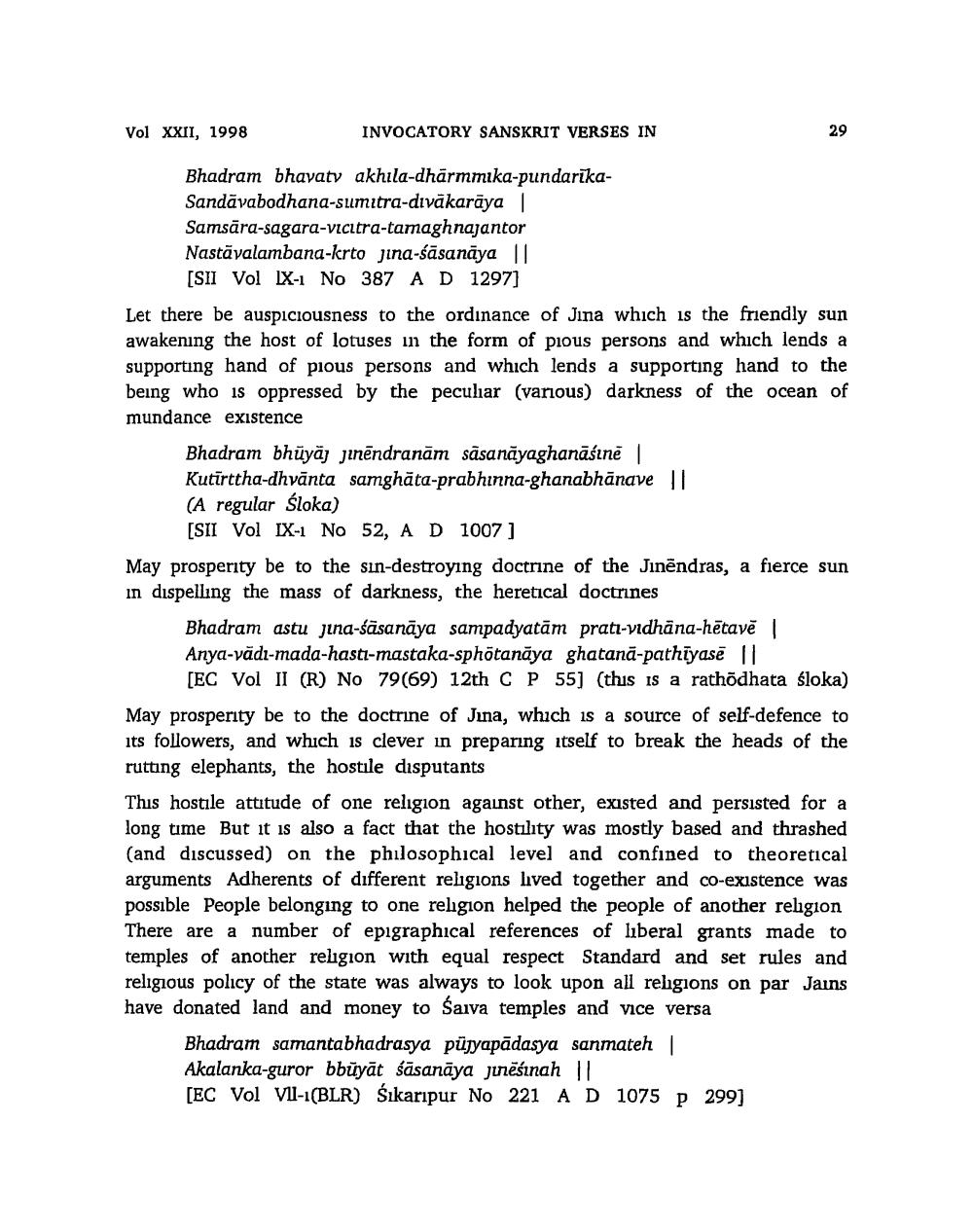________________
Vol XXII, 1998
INVOCATORY SANSKRIT VERSES IN
Bhadram bhavaty akhila-dhārmmika-pundarikaSandāvabodhana-sumitra-divākarāya || Samsāra-sagara-vicitra-tamaghnajantor Nastāvalambana-krto jina-śāsanāya ||
[SII Vol IX-1 No 387 A D 1297] Let there be auspiciousness to the ordinance of Jina which is the friendly sun awakening the host of lotuses in the form of pious persons and which lends a supporting hand of pious persons and which lends a supporting hand to the being who is oppressed by the peculiar (various) darkness of the ocean of mundance existence
Bhadram bhüyaj jinēndranām sāsanāyaghanāśine Kutīrttha-dhvānta samghāta-prabhinna-ghanabhānave | (A regular śloka)
[SII Vol IX-1 No 52, AD 1007] May prosperity be to the sın-destroying doctrine of the Jinēndras, a fierce sun in dispelling the mass of darkness, the heretical doctrines
Bhadram astu jina-śāsanāya sampadyatām prati vidhāna-hētavě 1 Anya-vādı-mada-hasti-mastaka-sphotanāya ghatanā-pathiyasē 11.
[EC Vol II (R) No 79(69) 12th C P 55] (this is a rathodhata śloka) May prosperity be to the doctrine of Jina, which is a source of self-defence to its followers, and which is clever in preparing itself to break the heads of the rutting elephants, the hostile disputants This hostile attitude of one religion against other, existed and persisted for a long time But it is also a fact that the hostility was mostly based and thrashed (and discussed) on the philosophical level and confined to theoretical arguments Adherents of different religions lived together and co-existence was possible People belonging to one religion helped the people of another religion There are a number of epigraphical references of liberal grants made to temples of another religion with equal respect Standard and set rules and religious policy of the state was always to look upon all religions on par Jains have donated land and money to Śaiva temples and vice versa
Bhadram samantabhadrasya pujyapādasya sanmateh || Akalanka-guror bbüyāt śāsanāya jinësinah || [EC Vol VII-1(BLR) Śıkarıpur No 221 A D 1075 p 299]




